Key Points to Remember
Cotton, linen, and silk are the most breathable fabrics and are recommended to prevent perspiration. Their ability to absorb and wick away moisture, as well as their lightness and softness against the skin, make them excellent choices for summer.
The French brand G-Heat® is renowned for its textile expertise, particularly its collection of high-end, 100% natural mulberry silk products certified by Oeko-Tex® Standard 100.
Free from toxic and chemical substances, and environmentally friendly, the pure silk pillowcases, silk sleep masks, and silk sheets are distinguished by their incomparable softness and excellent value for money, providing an unparalleled feeling of comfort.
Understanding the concept of breathable fabric
A fabric is considered breathable when it allows good air circulation inside the garment and on its surface.
Breathable fabrics effectively wick away sweat and moisture, while providing a feeling of freshness. They are therefore particularly suitable for hot weather and sports activities.
The criteria and advantages of a breathable fabric
The breathability of a fabric depends on various criteria. Here are the advantages of types of breathable fabrics:
- Its ability to absorb moisture
- Its anti-odor benefits
- Its quick-drying properties
- Its high lightness and porosity
- The spacing of its fibers
- Its thermal conductivity
The more a fabric meets these criteria, the better it will regulate body temperature and moisture.
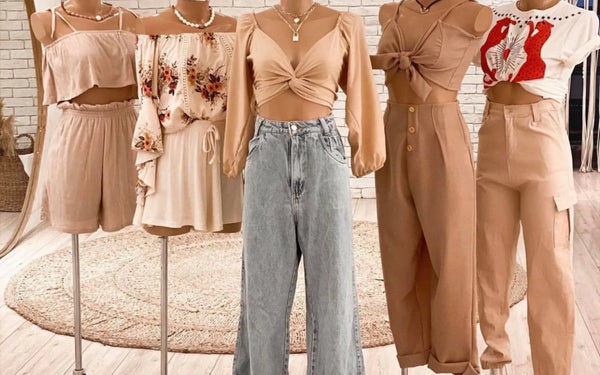
Sweating and the choice of clothing material
The role of sweating
Sweating is a natural mechanism for thermoregulation in the body. When it is hot, the body secretes sweat to cool down through evaporation.
The importance of choosing the right material
The choice of clothing material is therefore a key factor in promoting this evaporation, avoiding the unpleasant feeling of wearing damp clothing that sticks to the skin, and maintaining a feeling of freshness.
The consequences of choosing the wrong material
Wearing a non-breathable material that traps perspiration can lead to:
- A feeling of heaviness, discomfort, and heat
- Itching and skin irritation
- The development of unpleasant odors
- The proliferation of bacteria that cause infections
Polyester and perspiration: a combination to avoid?
Polyester, a synthetic material often used in textile manufacturing, has a poor reputation for breathability. However, certain textile innovations now make it possible to design polyester clothing that is more breathable.
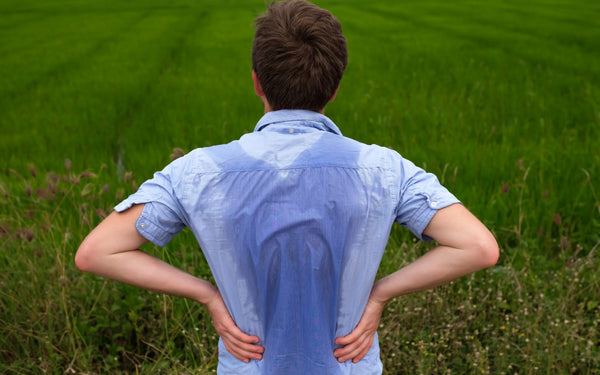
Different types of breathable fabrics
Many fabrics, whether natural or technical, combine breathability and thermal comfort:
| Fabric | Properties | Advantages | Recommended Use |
|---|---|---|---|
| Cotton | Absorbent, Soft | Comfortable, Lightweight | Daily wear, Summer |
| Linen | Lightweight, Breathable | Quick-drying, Antibacterial | Summer, Airy garments |
| Silk | Cool, Soft | Thermoregulating, Comfortable | Luxury, Nightwear |
| Hemp | Robust, Soft | Eco-friendly, Optimal ventilation | Sensitive skin, Sustainable |
| Bamboo | Thermoregulating, Antibacterial | Hypoallergenic, Eco-friendly | Sport, Daily comfort |
| Lyocell (Tencel) | Regulating, Durable | Biodegradable, Breathable | Sustainable, All-purpose |
| Modal | Soft, Airy | Exceptional comfort, Softness | Summer clothing, Comfort |
| Microfiber (Supplex, Tactel) | Absorbent, Quick-drying | Performance, Lightweight | Sport, Intense activities |
Cotton: a classic material for summer
Cotton is renowned for its exceptional absorbent properties. It can retain up to 27 times its weight in water! Its natural fibers ensure good skin ventilation.
Merino wool
Merino wool is very fine and lightweight, with high absorbent properties. Contrary to popular belief, it is ideal for the summer season.
Linen
Lightweight and soft, linen is one of the most breathable plant fibers. It dries quickly and has natural antibacterial properties.
Silk
Silk is the coolest fabric to the touch. Its silky texture and unique structure make it one of the most breathable fabrics. It effectively regulates temperature in hot weather.
At G-Heat, we highly recommend 100% natural mulberry silk. Its exceptional absorbency and very soft feel against the skin make it our fabric of choice for combating perspiration. In fact, it's the silk we use for our pillowcases, sleep masks, night caps, and all our bedding!
— Edouard, Founder of G-Heat®
Hemp
Hemp combines strength, softness, and optimal ventilation thanks to the porosity of its fibers. It is ideal for sensitive skin.
Bamboo
Hypoallergenic, antibacterial, thermoregulatory... Bamboo is an excellent eco-friendly alternative for staying cool.
Lyocell
Lyocell (or Tencel) is a regulating fiber derived from eucalyptus wood pulp. Innovative and sustainable, this biodegradable fabric is highly breathable.
Modal
Modal is a derivative of bamboo fiber, renowned for its exceptional softness and airy properties. Ideal for summer clothing!
Microfiber
Some technical microfibers such as Supplex or Tactel absorb moisture and dry quickly. However, they can sometimes be irritating.
Rayon, a little-known breathable fabric
Rayon is made from wood pulp. It is a breathable, absorbent, and comfortable material, ideal for staying cool.
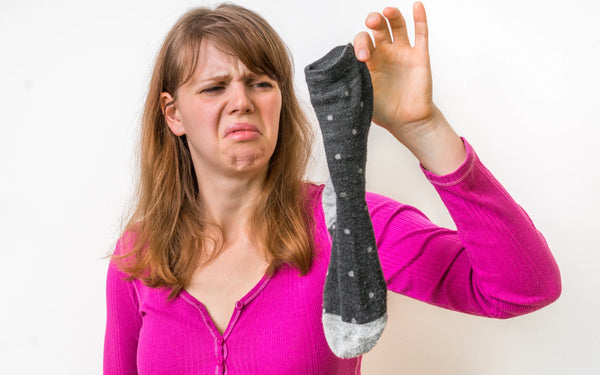
What fabrics should you wear in summer to avoid sweating?
The importance of choosing the right fabric in summer
During heat waves, choosing breathable, lightweight, and airy fabrics will help you stay cool and dry. This is essential for comfort and health.
Are natural fabrics the best allies against the heat?
Natural fabrics such as cotton, linen, hemp, and silk are excellent choices for summer. Their innate breathable properties are well suited to hot weather. Choose the fabric that suits you best according to your personal preferences.
The use of breathable fabrics in sports
Bamboo: an ideal fabric for fitness?
Thanks to its breathability and antibacterial qualities, bamboo is increasingly used in sports clothing, particularly for fitness. It effectively wicks away sweat.
Choosing the right sports fabric for better performance
For athletes, choosing clothing made from breathable and lightweight materials such as cotton, recycled polyester, or technical fibers improves comfort and performance.
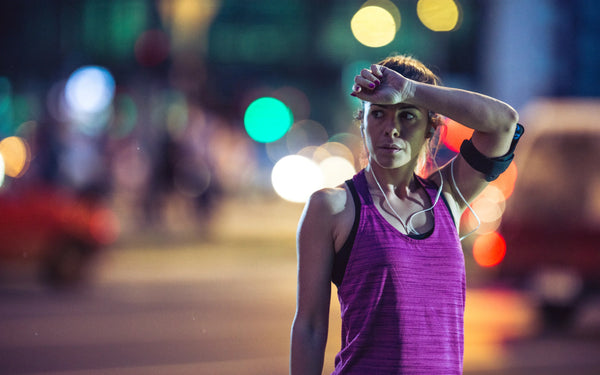
What are the best breathable fabrics for sensitive skin?
Silk, cotton, and modal are good choices for sensitive and allergic skin thanks to their softness and low irritant potential. Hemp and lyocell are also suitable.
Based on our experience with many customers, linen is ideal for people prone to skin irritation. Its softness and antibacterial properties soothe sensitive skin.
— Edouard, Founder of G-Heat®
What is the best breathable fabric for babies?
For babies, soft materials such as cotton and modal are recommended. Bamboo and hemp, which are hypoallergenic and antibacterial, are also excellent options.
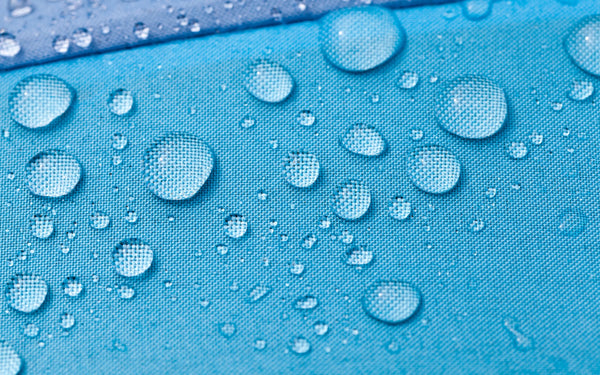
Conclusion
In conclusion, cotton, linen, and silk are the best fabrics for staying cool and combating perspiration. Their absorbency, lightness, and softness against the skin make them the perfect choice for sunny days.
Other interesting alternatives include hemp, bamboo, and Tencel and modal fibers. Technical materials such as Supplex may also be suitable.
To find the right fit, it is advisable to test different materials, depending on your needs and sensitivity. The most important thing is to promote good perspiration wicking!
FAQ
What is the most breathable fabric?
Silk is considered the most breathable fabric. Its unique structure and lightness make it the most “breathable” material in the world. Linen and cotton are also known for their high breathability.
What is the most breathable fabric?
The most breathable fabric is silk, thanks to its exceptional ability to allow air to circulate. Cotton and linen come next, with excellent absorbent properties and high porosity.
Which fabric does not retain odors?
Merino wool and linen are two fabrics that do not retain odors. Their fibrous structure and natural properties allow them to stay fresh longer.
Does viscose make you sweat?
Yes, viscose clothing tends to make you sweat. This synthetic material derived from wood cellulose is not very breathable and has difficulty wicking away perspiration.



